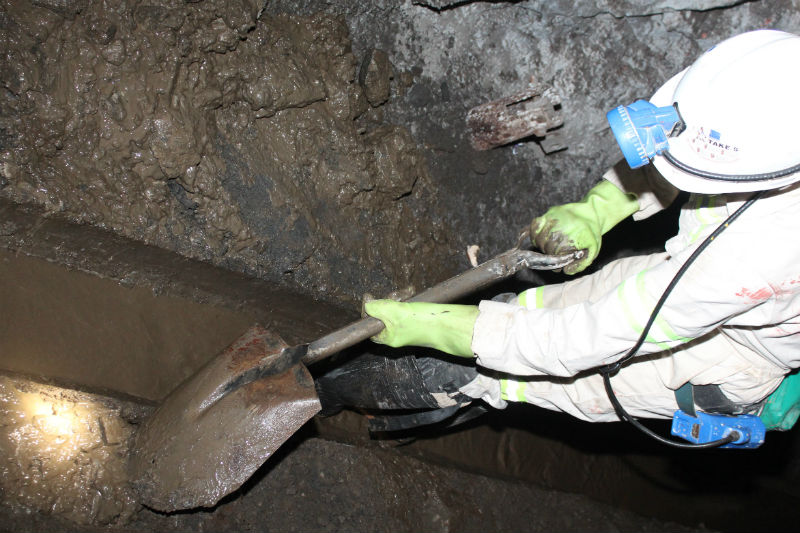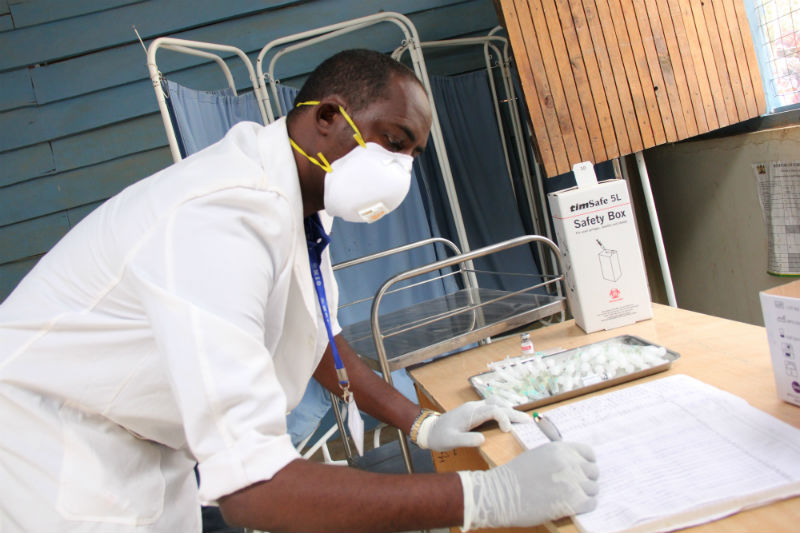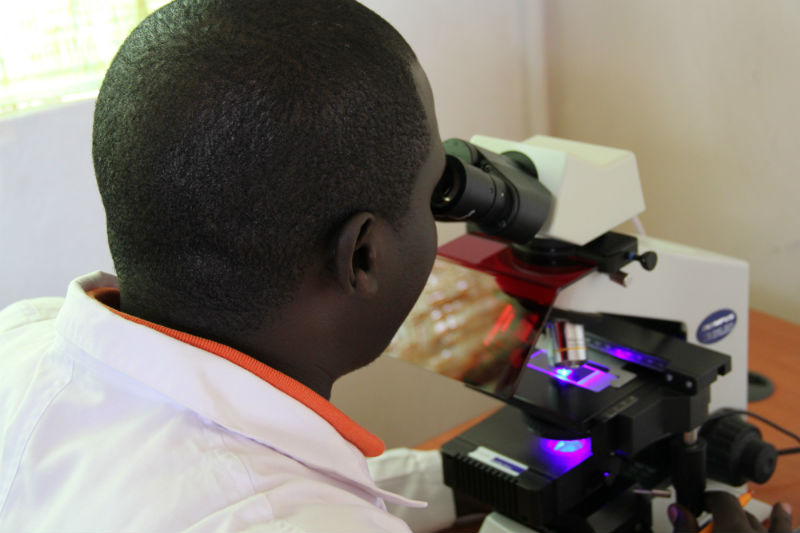The 21st century has been a challenging one in the fight against communicable and infectious diseases. According to the WHO Global Tuberculosis Report 2015, Tuberculosis is now the number one infectious killer, the study revealed that TB is causing more deaths than HIV. Southern Africa has the highest TB incidence rates in the world, averaging at 591/100,000 compared to the global average of 126/100,000. Seven out of the sixteen high burden countries in the world are in East and southern Africa.
The mining sector in Southern Africa has particularly been severely affected by TB and HIV and related risks such as silicosis. Swaziland, Lesotho and Mozambique are among the main mineworker-sending countries to South Africa. Every year, nearly half a million men travel from across the Southern African region to work in South Africa’s mines and, in doing so, may contract TB as well as HIV and silicosis (a degenerative lung disease linked to exposure to silica dust in gold mines). Silica dust forms part of an ever-present potential hazard for mineworkers resulting in the highest TB incidence rates in the world.
Mineworkers are particularly vulnerable to TB and silicosis due to exposure to multiple risk factors as a result of their working and living conditions, and their migrant lifestyles. Crowded dormitory-style living conditions and poor housing in informal settlements increase the risk of contracting the airborne disease. High rates of HIV also increase the likelihood of TB infection; regular movements across borders provide a route for transmission of infections to families and communities in the workers’ home countries.
This pattern of mostly male migrants arriving at the mines to work, becoming infected with TB and returning home again – has created an enormous public health crisis throughout the region. Silicosis can take from ten to thirty years to develop after exposure, a large proportion of miners only develop silicosis and TB after they have left mines and returned to their communities, often in a different country. In many cases when miners become sick from TB, HIV or silicosis and/or a combination of the three, they will return or be sent back to communities of origin.
They often receive no compensation from the mining company, have no access to cross-border health referrals and possess no source of income to support themselves and their families while they are out of work receiving treatment. Back in their communities, ex-miners don’t always get the treatment they need and often succumb to the bacteria while spreading the disease.
The consequences of this health crisis are broad and have far-reaching effects, not to mention the social and economic impact for the miners’ communities are equally devastating. In many instances a job at the mine is a family’s only viable economic opportunity. A ‘retrenchment’ (redundancy), therefore, not only signals a decline in health, it often also means an end to the family’s only stream of income.
Treating TB among migrant mineworkers is particularly difficult due to regular migration as treatment must be taken continuously and uninterrupted to avoid developing multi-drug resistant TB. In addition, health systems in the affected countries are not harmonized, making it difficult to track and refer patients across provincial and national borders.

IOM addresses the health of migrants in the Southern Africa mining sector.
TB in Mining in Southern Africa Score Card
By David Makapela
IOM in Southern Africa has been involved in creating and maintaining strategic partnerships with the South African Development Community (SADC) in an effort to end TB. IOM was a key partner in the SADC Declaration on TB in the Mining Sector signed in 2012 and A Framework for the Harmonised Management of TB in the Mining Sector which was signed in 2014. These two policy tools led to IOM providing technical assistance in the development of the SADC Code of Conduct (2015) which provided guidelines for the operationalization of the declaration. IOM additionally ensured the inclusion of migrants in the SADC Framework on Population Mobility and Communicable Diseases which aims to improve harmonisation and coordination of responses to improve access to healthcare services.
It is through all the above efforts that IOM has managed to influence the country based response through research, advocacy for policy development, provision of migrant sensitive health services and strengthening partnerships. The regional and national response on advocacy for policy development called for intensified actions on policy change for TB programming in the region. IOM provided technical (financial) support through facilitation and convening of a successful Policy Dialogue on TB, Silicosis, HIV, Portability of Social Security Benefits and Compensations that was held in Swaziland. This resulted in a high level political declaration by both the Ministry of Labour and Social Security and the Ministry of Health in Swaziland. The declaration called for a radical response to address the needs of the current and ex-mineworkers.
Presently, IOM facilitates the discussion on TB in the mines programming through the established migration and health forums at country level and this has brought an interest among concerned stakeholders from government to civil society organisations. It is also important to note that and through community change agents (Peer Educators), IOM facilitates the provision of migrant sensitive health services.
Through the Service Delivery and Capacity Building Framework, IOM has been able to reach out to thousands of current and ex-mineworkers, their households and communities affected by the mining sector. This was achieved through creating demand and enhancing the supply of health care services through and amongst other activities TB and HIV awareness raising campaigns; information dissemination and advocacy on the rights of migrants; building capacity of service providers to provide migrant sensitive health services; and strengthening the referral process between public, private and civil society service providers for collaborative migration sensitive health and compensation services. For an example; in Lesotho, Mozambique, Swaziland and South Africa, IOM together with Implementing Partners conducted festive season cross border campaigns with HIV and TB messages being the subject matter. This has led to HIV/TB information dissemination and number of condoms being distributed.

IOM has managed to influence the country-based response through research, advocacy for policy development, provision of migrant sensitive health services and strengthening partnerships.
TB and Migration in Zimbabwe
By Blessing Kanengoni
While there is a low national case detection rate, currently pegged at 46%, the Zimbabwe NTP continuously strives to reduce transmission of the disease and mortality rate, through breaking the chain of transmission of infection and through free TB diagnosis at national laboratories. However, Zimbabwe has a low coverage of TB diagnostic services with only two TB laboratories offering TB sputum culture microscopy. The other available laboratory facilities are scarce and only conduct smear microscopy which has a lower sensitivity, especially in cases of TB/HIV co-infection and which cannot detect drug resistance.
Zimbabwean migrants often lack access to these facilities due to their transient behavior. When cross-border Zimbabwean migrants live in neighboring countries such as Botswana and South Africa, they are particularly hard-to-reach. This is because of the many challenges they may encounter as they try to access health services. For instance: irregular migrants often avoid using public health facilities in host countries out of fear of being intercepted and deported; long distances between the health facilities and the main road network affects attendance; negative attitudes of health workers can impact turnout; lack of time, the cost of travel and health services, and opportunity cost also have a negative impact. In addition, poverty and a poor understanding of TB disease can cause migrants to put off care seeking. The overcrowded living conditions in host countries render them more susceptible to TB infection. In many cases, presumptive TB cases of this hard-to-reach group are initiated on TB treatment without the requisite diagnostic tests and with poor follow-up due to their mobility patterns.
Efficiently monitoring TB incidence and prevalence in this population requires innovative approaches and active case finding. With the support from TB REACH, several new interventions were designed, contributing to increased access to early TB case detection, rapid diagnosis and improved treatment outcomes among irregular Zimbabwean migrants returned from South Africa and Botswana, and for the communities they interact with in Matebele land South Province.
These interventions include: systematic TB screening for irregular Zimbabwean migrants deported from South Africa and Botswana; improving access to TB screening and treatment services for migrants and host communities through the establishment of mobile clinics along the transport corridor and outreach activities; increasing awareness of TB and HIV/AIDS among migrants and high migrant-sending communities through door to door TB health messaging conducted by community health workers; distribution of educational videos for display on buses, as well as in schools and shops; and the use of m-health technology, which employs cellphones to transmit results to patients as well as to provide them with new information.
Nine months into implementing the interventions, 20 445 people have been screened. 3 593 people have been reported to have presumptive TB and 113 of them were positive TB cases. additionally 96 cases were recorded, which is a 20% significant change from baseline to the intervention period.
Of the 22 countries designated by WHO as high TB burden countries, Zimbabwe ranks 17th with an estimated TB incidence rate of 562/100,000. The TB epidemic in Zimbabwe is fuelled by the severe parallel HIV pandemic (adult HIV prevalence rate 15.2%), making TB the second leading cause of death. The TB mortality rate (excluding HIV+TB) is 33/100,000, increasing four-fold among patients with both TB and HIV (132/100,000). Seventy percent of people living with TB also have HIV.

Efficiently monitoring TB incidence and prevalence in this population requires innovative approaches and active case finding.